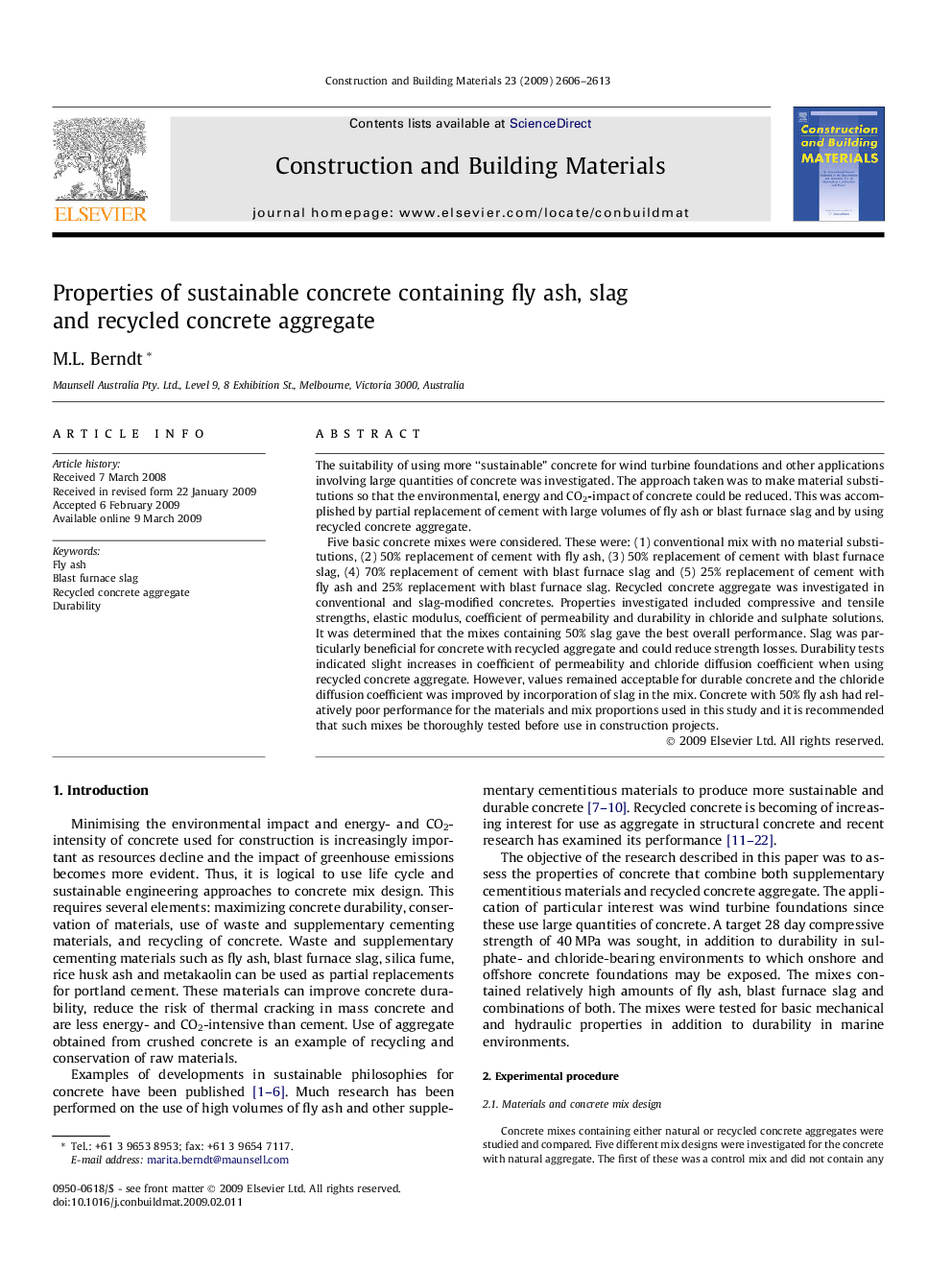| Article ID | Journal | Published Year | Pages | File Type |
|---|---|---|---|---|
| 260444 | Construction and Building Materials | 2009 | 8 Pages |
The suitability of using more “sustainable” concrete for wind turbine foundations and other applications involving large quantities of concrete was investigated. The approach taken was to make material substitutions so that the environmental, energy and CO2-impact of concrete could be reduced. This was accomplished by partial replacement of cement with large volumes of fly ash or blast furnace slag and by using recycled concrete aggregate.Five basic concrete mixes were considered. These were: (1) conventional mix with no material substitutions, (2) 50% replacement of cement with fly ash, (3) 50% replacement of cement with blast furnace slag, (4) 70% replacement of cement with blast furnace slag and (5) 25% replacement of cement with fly ash and 25% replacement with blast furnace slag. Recycled concrete aggregate was investigated in conventional and slag-modified concretes. Properties investigated included compressive and tensile strengths, elastic modulus, coefficient of permeability and durability in chloride and sulphate solutions. It was determined that the mixes containing 50% slag gave the best overall performance. Slag was particularly beneficial for concrete with recycled aggregate and could reduce strength losses. Durability tests indicated slight increases in coefficient of permeability and chloride diffusion coefficient when using recycled concrete aggregate. However, values remained acceptable for durable concrete and the chloride diffusion coefficient was improved by incorporation of slag in the mix. Concrete with 50% fly ash had relatively poor performance for the materials and mix proportions used in this study and it is recommended that such mixes be thoroughly tested before use in construction projects.
